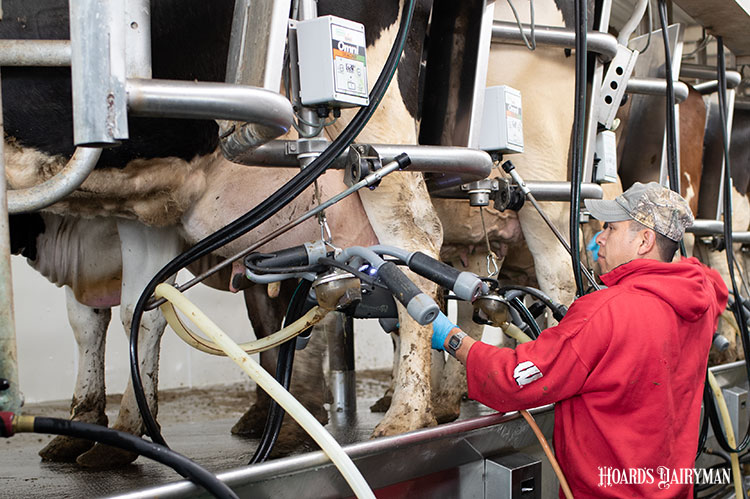
A cow’s first line of defense against mastitis-causing pathogens is its teats. Even with an excellent milking routine and clean, dry bedding, having healthy teats can be the difference between infection occurring or not.
Teat scoring is a simple way to evaluate the health of your cows’ teats and pick up on any short- and long-term effects happening when the teats are manipulated during milking, said Paul Virkler of Cornell University’s Quality Milk Production Services. Short-term changes to the teat evaluate if the cow is happy with how it was milked today, he described in a National Mastitis Council (NMC) webinar. Issues in this area extend the time necessary for the teat canal to close, leading to a greater risk of environmental mastitis. Long-term effects look at changes over time that may also contribute to mastitis as well as animal welfare concerns.
Identify the problem
To properly score your herd’s teats, Virkler pointed to the guidelines developed by Teat Club International. NMC also has a portfolio of images and causes available to members on their website. Evaluate 80 cows or 20% of the herd, whichever is a larger number, he said. Score teats within 60 seconds of milking unit detachment.
Negative short-term impacts will be evidenced by:
- Teat color. Red or blue teats are abnormal. “Blue means a lack of oxygen, and we don’t want any tissue to be in that situation,” Virkler said.
- Swelling at the base. Observing a mark where the liner attached to the udder isn’t cause for concern, but a pronounced ring is. This may be more obvious in fresh cows.
- Hardness at the teat end. Run your fingers down the teat, and if you feel swelling, that’s a problem, Virkler said. Wedging, which is observed by white marks left by the liner, may also occur. This means the teat was held too long without oxygen.
- Hemorrhaging. Little red spots at the end of the teat indicate broken blood vessels. This results from excessive vacuum for too long. The spots will go away eventually, but the damaged tissue will be painful, Virkler said.
A good benchmark is for less than 20% of cows to have at least one teat with a color, swelling, or hardness problem and less than 10% of cows to show hemorrhaging, he explained. These issues are often caused by vacuum or pulsator problems or a milking routine that results in long periods of no milk flow when the unit is attached.
Teat skin condition and hyperkeratosis can be assessed to judge what long-term effects are happening, Virkler continued. Abnormal skin condition may mean the teat is dry and scaly, or there may be an open lesion. Less than 5% of cows should have an open lesion. If you observe this in many cows, you may need to reduce exposure to harsh environmental conditions or the moisture in the bedding.
The amount of keratin exposed at the teat end may also be cause for concern if it is excessive. “We shouldn’t fault a cow if she has a little bit of hyperkeratosis. We should look into it if she gets into the rough and very rough categories,” Virkler said. Consider what is happening for the teat to respond that way.
If your cows’ teats show signs of wear, you may need to evaluate your equipment to determine if vacuum and pulsation are correct. Review the milking routine to ensure cows are letting their milk down, and assess the cleanliness of the cow’s environment. Finding and addressing the problem will add another layer of protection to your mastitis control plan.








